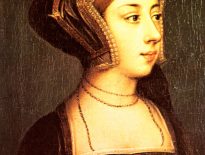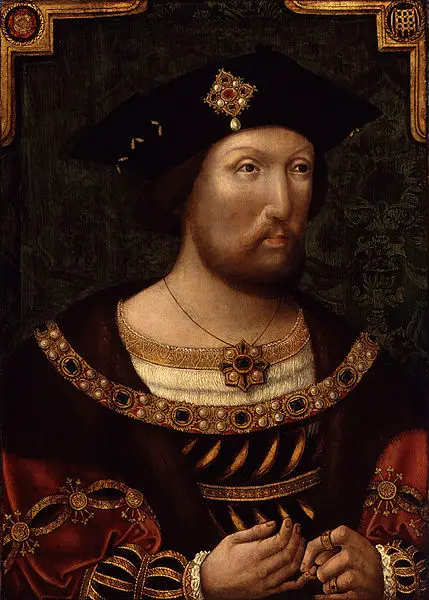3rd March 1515 is one of the dates given in the French contemporary sources for the secret marriage of Mary Tudor, Queen of France, and Charles Brandon, Duke of Suffolk, but did the couple really marry on this date?
In today's "on this day in Tudor history", I examine the English and French sources, such as letters and chronicles, to see which date they support for the couple's secret marriage.
Book recommendation: "Charles Brandon: Henry VIII's Closest Friend" by Steven Gunn
I went into this in more detail in my Claire Chats talk, click here.
Also on this day in history:
- 1500 - The traditional date given for birth of Cardinal Reginald Pole, Mary I's Archbishop of Canterbury, at Stourton Castle in Staffordshire. He was the third son of Sir Richard Pole and Margaret Pole (née Plantagenet), Countess of Salisbury. His mother was the daughter of George, Duke of Clarence, brother of Edward IV and Richard III.
- 1528 – Marriage of Margaret Tudor, sister of Henry VIII and widow of James IV, and her third husband, Henry Stuart (Stewart), 1st Lord Methven. She had divorced her second husband, Archibald Douglas, 6th Earl of Angus, in 1527. Margaret's marriage to Methven was not happy for long, though. Margaret had managed to pick another unfaithful husband, so she fought for a divorce, as she had with her second husband, but was not supported by her son, King James V. Margaret was later able to reconcile with Methven. Click here to view Sarah-Beth Watkins' expert talk on Margaret.
- 1542 – Death of Arthur Plantagenet, Lord Lisle, courtier, soldier, diplomat, administrator and illegitimate son of Edward IV. He had been arrested in May 1540 for alleged treasonable communications with Cardinal Pole, and, according to John Foxe, suffered a heart attack on 3rd March 1542 when told the news of his release from the Tower.
- 1551 - Death of Thomas Wentworth, 1st Baron Wentworth and Lord Chamberlain in the reign of Edward VI. He was a member of the jury at the trials of Anne Boleyn and George Boleyn, Lord Rochford, as well as those of Henry Pole, Baron Montagu, and Henry Courtenay, Marquis of Exeter. He was buried in the St John the Baptist Chapel, Westminster Abbey.
- 1551 - Burial of Martin Bucer, theologian and reformer, in Great St Mary's Church, Cambridge. He died 28th February.
1582 - Birth of Edward Herbert, 1st Baron Herbert of Cherbury, soldier, diplomat, philosopher, poet and author of "The Life and Raigne of King Henry the Eighth". Although his career was in the Stuart period, Tudor historians make use of his work on Henry VIII.



I am fascinated with Charles Brandon. I think it’s the whole best friend of Henry VIII thing. Thanks! Michelle t
At least this date makes more sense as the actual date than that given by Sarah Bryson in her “Le Reine Blanche: Mary Tudor, A Life in Letters, where she gives the wedding as 5th February 1515, which would make it about five minutes after Suffolk arrived in Paris. She cites a letter dated a day or two later in which the Duke has met with the new King and paid his respects to the widowed Queen and then he writes of her distress. This isn’t supported by the evidence as other letters indicate he is still in a quandary over Mary, until his confession in early March that he and Mary are married and have slept together.
The relationship between Mary Tudor and Charles Brandon has fascinated me for decades, partly because they were Henry’s two favourite people, his favourite sister and best friend, because they had a love match, they regained Henry’s grace and favour and they left a legacy in their grandchildren, the Grey sisters, Jane, Catherine and Mary. Henry was fond of his sister and Charles never lost his affection either, dying a natural death in 1545, less than eighteen months before the King. The fact we have their letters and therefore their own words gives us a real insight into their marriage, interactions with Henry, into how they felt and feared during this time, negotiating for their return home and forgiveness and that is valuable.
Steven Gunn’s theory regarding the marriage being mid February definitely makes more sense and perhaps there was a further ceremony on 3rd March, I just don’t know. There is certainly no evidence that they were married at the beginning of February and the letter talks about the couple’s desire to get married and does not say that they were already married. I completely agree with you, RTL.
Thanks. Yes, anytime from mid February to the first week in March fits perfectly.
My favourite excuse for his marriage to Henry was “Sir, you never saw a woman weep so” and Mary was clearly at him to rescue her and an English Knight is not going to leave an English rose, a Princess and damsel in distress, in such a state. He and Mary apparently were in love, but Suffolk had taken a vow to not propose marriage without the permission of the King, with Suffolk being afraid of what he had done, but the couple were able to negotiate their way out of trouble and buy Henry’s forgiveness.